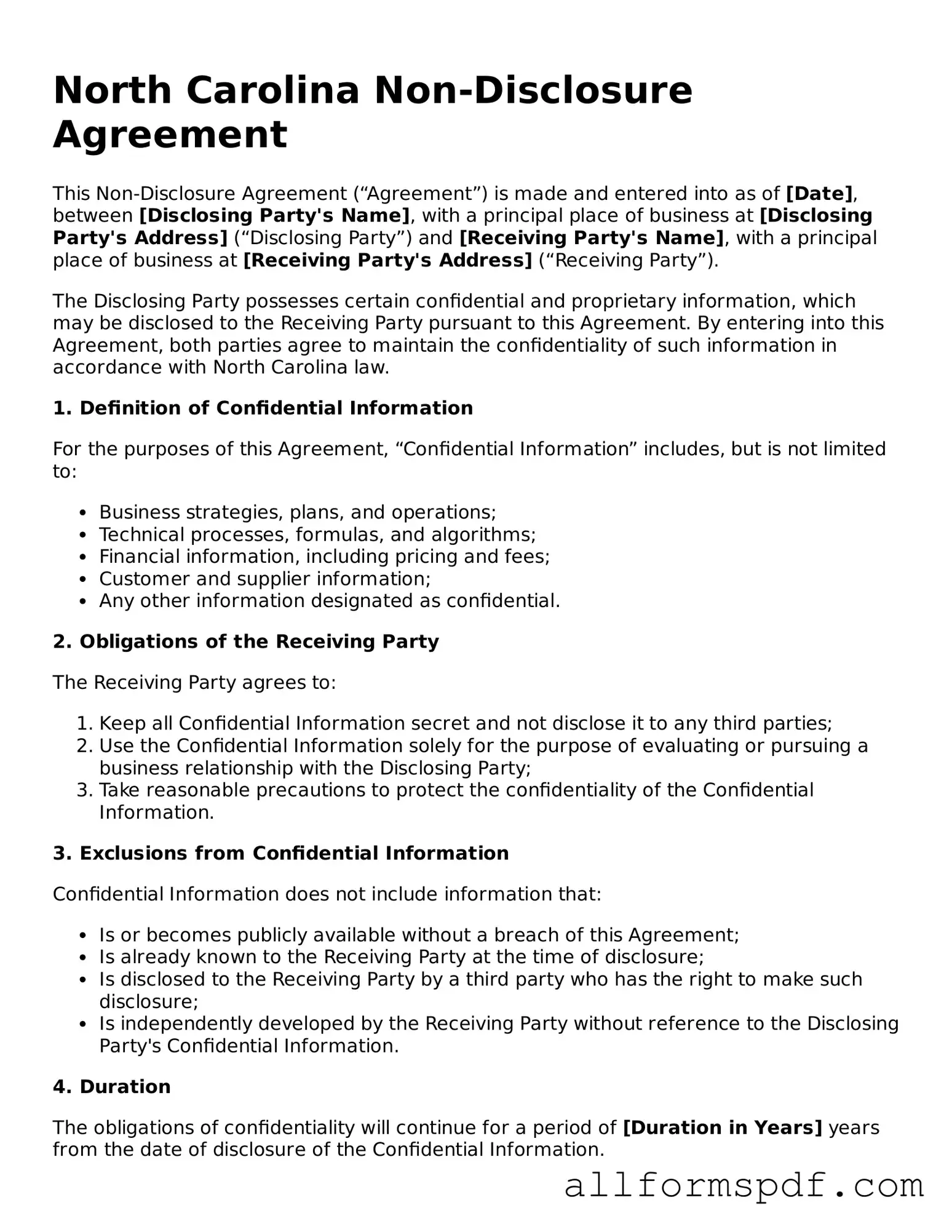When filling out the North Carolina Non-disclosure Agreement (NDA) form, individuals often overlook critical details that can lead to misunderstandings or legal issues. One common mistake is failing to clearly define the information that is considered confidential. Without a precise definition, both parties may have different interpretations of what is protected under the agreement. This ambiguity can create problems down the line, especially if sensitive information is inadvertently disclosed.
Another frequent error is neglecting to include the duration of the confidentiality obligation. An NDA should specify how long the information must remain confidential. Without this time frame, the agreement may be deemed ineffective or unenforceable. Parties might assume the confidentiality lasts indefinitely, but it's essential to set clear boundaries to protect both parties' interests.
Additionally, individuals sometimes forget to identify the parties involved in the agreement. It’s crucial to list all parties clearly, including their full legal names and addresses. If the parties are not properly identified, it could lead to confusion about who is bound by the terms of the NDA. This oversight can result in one party believing they are not obligated to uphold the agreement, which could lead to disputes.
Lastly, people often skip the signature section or fail to ensure that all parties sign the document. An NDA is not legally binding until it is signed by all involved parties. Without signatures, the agreement lacks enforceability, leaving both parties vulnerable. Always double-check that everyone has signed and dated the document before considering it finalized.
